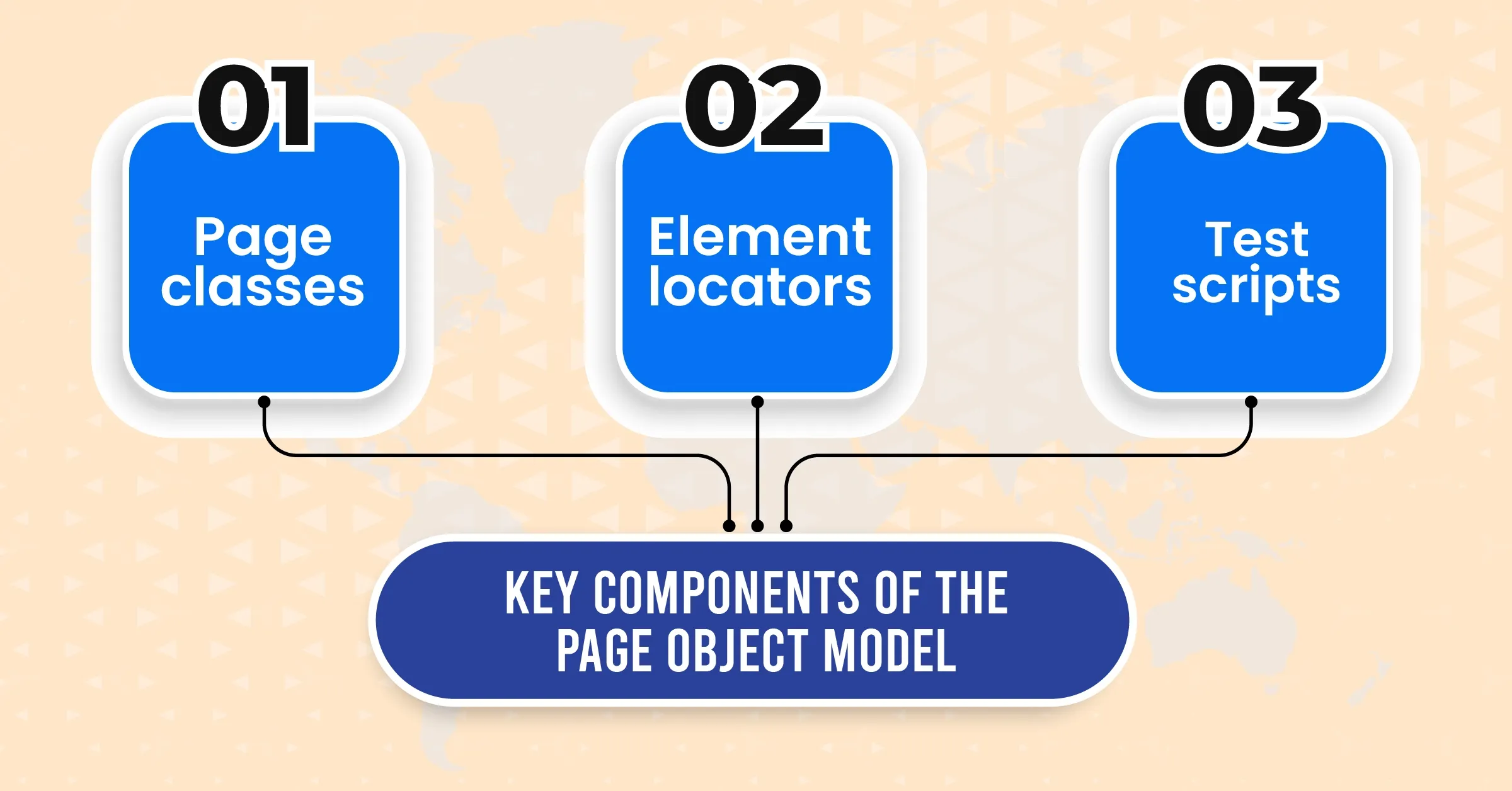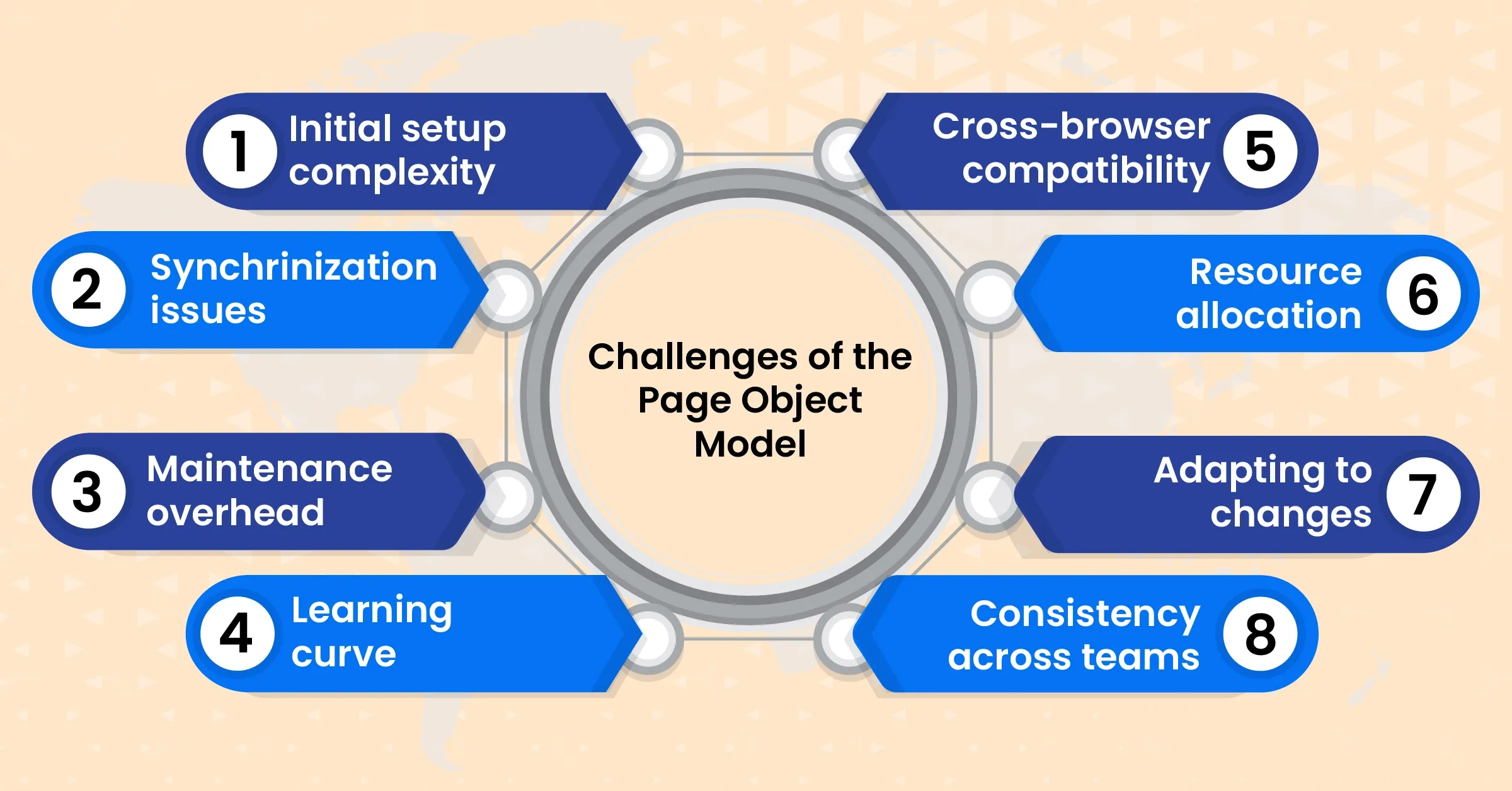

The Page Object Model (POM) acts as a roadmap for efficient testing in websites and applications. It arranges testing procedures coherently, enhancing collaboration and minimizing errors. We have covered the benefits of Page Object Model, its key components, best practices, challenges, and future trends. This will be a complete guide for you to be aware of and get started. So, let’s take a glimpse!
In software testing, taking a sophisticated approach can be truly advantageous. Extracting the benefits of Page Object Model can prove to be one of those approaches. This is because it improves the effectiveness of testing. It is like having a clear road map of how to test websites and applications. POM is a method by which communication between developers and testers can be enhanced. It also simplifies and organizes testing.
In this blog, we will cover all of the essential elements of POM. This ranges from the benefits of Page Object Model to the best practices and challenges, etc. Irrespective of whether you are a trained professional or brand new to testing, understanding the Page Object Model will give you effective testing techniques. So let’s get started.
The Page Object Model (POM) is a testing design pattern. It is applied to improve the effectiveness and upkeep of automated software tests. The main focus is on building a systematic representation of the UI components and features. These representations are included within classes referred to as "page objects."
Each page object is associated with a particular application page or component. Moreover, POM in Selenium is like using a map to navigate a website. It organizes web page elements like buttons and forms into classes. So it makes tests easier to write and maintain. Changes to the website won't confuse your tests because POM keeps things neat and clear.
Now that we know what is POM in Selenium let us see the immense benefits of Page Object Model:
Among the very first benefits of Page Object Model is that it maintains order as it keeps the testing code apart from the specifics of the website or application. This implies that you just need to update one location if something changes.
You can avoid repeatedly writing the same testing procedures when using POM. For each page or segment, you construct a "map" that you can use again and again. This makes it one of the most advantageous benefits of Page Object Model.
POM facilitates developers' and testers' collaborative work. While testers concentrate on testing, developers create the software. Each component's function is made obvious using this model.
POM streamlines the process of fixing the testing code when a website or app is updated. The moment you update the "maps" page, everything clicks into place.
One of the major benefits of Page Object Model is also that it lessens the probability of errors. There is a lower likelihood of mistakes appearing because nothing is written twice.
Testing becomes quicker because you aren't beginning from scratch each time. For testers, this saves time and effort.
POM simplifies updates and modifications. You only need to make one adjustment whenever a button moves or the page layout changes.
The Page Object Model in Selenium keeps things organized when web pages and applications expand, making it essential for efficient selenium automated testing services. It's similar to having a test plan in place when things expand.
Now that we know of the unmatched benefits of Page Object Model, what are the key components of it? Let us understand.
The Page Object Model (POM) consists of several essential components. They work together to streamline and enhance automated testing for web applications:
Page classes represent various application pages or components. There are methods to interact with the UI elements on a given page in each page class. Furthermore, test scripts become easier to read thanks to this encapsulation. It keeps test logic and page-specific details distinct.
Unique identifiers called element locators are used to find and interact with UI elements. This applies to dropdowns, text fields, and buttons. CSS selectors, XPath expressions, and ID attributes are examples of typical locator types. These locators are additionally kept in page classes. So this makes access and modification simple.
The actual steps of the automated tests are contained in test scripts. Test scripts invoke the relevant page classes' methods rather than directly dealing with UI elements. This method simplifies the intricate nature of UI interactions. As a result, test scripts become cleaner and easier to maintain.
There must be some practices to make this framework as effective as possible. So, let us know about it to maximize the benefits of Page Object Model.

Implementing the Page Object Model can revolutionize your automated testing efforts. However, to truly extract the benefits of Page Object Model, adopting the right practices is crucial. So let’s see some best practices:
Maintain clear and consistent naming for page classes and element locators. Meaningful names improve readability and ease of maintenance.
Abstract complex interactions into methods within page classes. Encapsulate page-specific actions to keep test scripts concise and focused.
Keep test scripts simple and logic-light. Delegate UI interactions to page class methods, promoting a clear separation of concerns.
Organize page objects in a modular fashion based on the application's structure. This promotes scalability and makes the framework adaptable to changes.
Implement strategies to handle dynamic UI elements, such as waits and retries. This ensures reliable interactions even in fluctuating conditions. This is one of the major practices for gaining the benefits of Page Object Model.
Store page objects and test scripts in version control repositories. This facilitates collaboration, tracking changes, and also maintaining a history of modifications.
Schedule routine reviews and updates for element locators and page classes. This prevents tests from breaking due to UI changes.
Encourage code reviews among the testing team to ensure adherence to POM principles. Moreover, maintain clear documentation for page objects and their methods.
Design page objects and tests to be compatible with different browsers and platforms. As a result, this ensures consistent behavior across various environments.
Implement robust error-handling mechanisms in page objects and test scripts. Furthermore, provide comprehensive reporting to identify and address failures quickly.
When you implement something, you are bound to face challenges. What are the challenges in this model that stops you from extracting the benefits of Page Object Model? Let’s find out.
The Page Object Model design pattern brings substantial benefits to automated testing. But it's crucial to be cognizant of potential difficulties. Ones that might arise during its implementation:
It can be challenging to create the initial framework and page objects, especially for extensive and complex applications. So planning is necessary to ensure effective page element mapping and structuring.
POM depends on the precise synchronization of test scripts and user interface interactions. Furthermore, test failures may result from timing errors. This is especially true when dealing with dynamic web elements or asynchronous activities.
It might be challenging to maintain page objects and locators, especially in dynamic applications. So, consistent upgrades to the framework may be required by frequent UI or application updates.
Testers and developers may need to change their ways of thinking to accommodate POM. There may be a learning curve. It arises when it comes to understanding how to arrange page items and also work with test scripts.
It can be challenging to guarantee that page objects and tests function correctly in many browsers. It is necessary to fix compatibility problems and also browser-specific behavior.
A robust POM framework takes devoted resources to build and maintain. It involves resources like time, talent, and equipment. So effective resource allocation is required of organizations.
POM makes managing modifications simpler. Nevertheless, it can still take time to get used to frequent UI changes or large application updates.
Ensuring that POM practices are applied consistently across various teams and projects might be difficult. As a result, this might result in changes in the framework's efficacy. Hence, consistency needs to be taken care of.
What does the future hold for the Page Object Model? You need to know this to make sure you consistently extract the benefits of Page Object Model. So let’s take a look.

As technology continues to evolve, the Page Object Model framework is poised to undergo exciting advancements that can further streamline automated testing processes:
The development of page items can be automated by incorporating artificial intelligence. Time and effort can also be saved by using AI algorithms. Furthermore, it can also aid in analyzing user interface changes and producing related page items.
NLP capabilities can improve the way that testers and page items interact. Testers will be able to issue commands in simple terms. Moreover, POM would convert them into the proper test steps.
Visual recognition technologies can identify UI elements by appearance. This could enable testers to identify factors even when they lack proper locators—as a result, making tests more robust.
Blockchain can provide secure and tamper-proof test data storage. POM could leverage blockchain for storing test data, enhancing data integrity and compliance.
With the rise of quantum computing, POM could benefit from faster data optimization. As a result, this potentially leads to quicker test executions.
Advanced reporting tools could provide insights into the effectiveness of POM-based tests. Furthermore, analytics could suggest areas for optimization and test coverage improvement.
In the coming times, POM principles might extend to microservices testing. Furthermore, it could leverage POM for efficient testing of individual service functionalities.
POM might develop to become more approachable, addressing non-technical stakeholders. This might make it easier for several teams to communicate and work together. This will also make it easy for you to leverage the benefits of Page Object Model.
There are numerous benefits of Page Object Model (POM) in testing. It functions like a practical map for easier testing. Moreover, POM streamlines assessments, cut down on repetition and enhances teamwork. Although difficulties can occur, sound procedures aid in managing them. AI and cutting-edge technology are in store for the advancement of POM.
So why are you still waiting? Make sure you hire the top professional software testing services at Appsierra. We will help you take the proper steps. Also, we will help you to improve your brand’s reputation. So, connect with us now and use our guide right away to reap the benefits of Page Object Model!